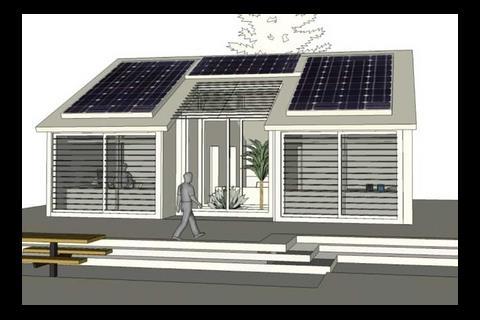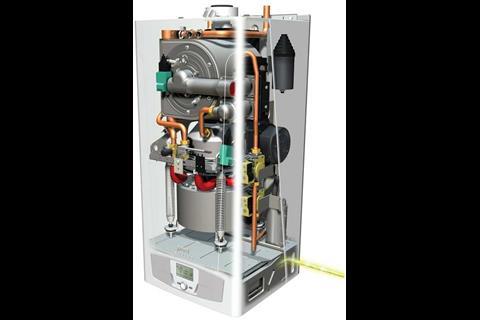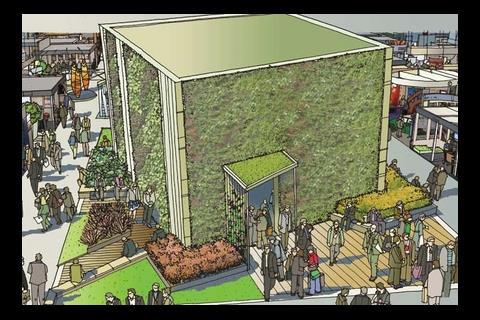Greeting you at Ecobuild in March will be more than 1,000 exhibitors and 100 conferences ÔÇô thatÔÇÖs an awful lot of ground to cover, so Stephen Kennett guides you towards five five-star attractions you wonÔÇÖt want to miss
Launched five years ago, Ecobuild has become the show to attend for those searching out the emerging issues and latest thinking in sustainable design and product innovation. With more than 1,000 exhibitors and 100 conferences and seminar sessions available to visit, thereÔÇÖs enough to keep the most dedicated specifier occupied. Here we highlight five must-see attractions.
1. Off-site construction
The most pressing issue for specifiers and users of offsite construction techniques is often how to integrate one system with another, or with traditional build elements. Mtech Consult and Galliford Try are bringing together lots of systems and techniques including timber frame, light steel framing, cladding, volumetric modules, insulated render and staircases to demonstrate the benefits and techniques.
Senior Architectural Systems and ModCell are also teaming up to launch a modular system that uses lime-rendered straw bale construction within a structural timber frame that locks away more carbon than it produces during the construction cycle. Willmott Dixon has undertaken extensive research into the method of construction and will be on hand to discuss it.
2. Cityscape
The UKÔÇÖs first green wall was installed at the Paradise Park ChildrenÔÇÖs Centre in Islington, north London. It was much photographed five years ago, after it opened, and photographed even more last summer, after all the plants died. Fortunately, the state of the vertical gardenerÔÇÖs art has advanced since then. Patrick Collins, a landscape gardener and Chelsea Flower Show gold medalist, will show just how much with his design for an imposing cube of green walls built to illustrate the systems available for large-scale urban installations. The 8m high structure, which should be hard to miss in EcobuildÔÇÖs Cityscape arena, has the first use in the UK of the Mobilane LivePlanter green walling method. This lightweight patented system uses a substrate specifically developed for living wall applications. It will also include hydroponic modules for vertical cultivation on walls as well as more traditional trellis-type systems.
3. Feed-in tariffs
The announcement at the beginning of the month by the Department of Energy and Climate Change on feed-in tariffs and renewable heat is bound to increase interest in micro-renewables. A number of technologies allowing householders and small businesses to take advantage of this move will be unveiled.
After completing extensive field trials, BaxiGroup will launch its long-awaited domestic micro-CHP unit. Suitable for social and private housing, it uses a free piston Stirling engine to generate 1kW of electricity while also providing space heating and hot water for the home.
ItÔÇÖs claimed the unit can satisfy up to two-thirds of a typical householdÔÇÖs electrical requirements. Around one third of this energy can be used in the home and another third exported back to the grid.
Viessmann has come up with a system that should overcome the age-old problem of how to integrate different heating technologies in the form of its Vitocal 222-G and Vitocal 242-G heat pump towers. Designed for new build applications where space is at a premium, they integrate a heat pump, cylinder, secondary heating circuit pump, optional electric flow heater and connection to the firmÔÇÖs flat panel solar collectors or vacuum tube collectors.
ICS Heat Pump Technology will be launching their commercial 80kW packaged heat pump, which will deliver 65┬░C output temperatures even in ambient temperatures as low as ÔÇô12┬░C without any supplementary heating. This packaged unit is geared towards retrofit applications where its output temperatures will allow heat pump-based renewable heating systems to be installed with minimal replacement work on existing radiator systems.
Also check out the Solar Hub, which is dedicated to explaining the implications of the feed-in tariffs.
4. The fringe
A huge number of conference and seminar events will cover everything from the new Part L of the ║├╔ź¤╚╔˙TV Regulations and the Code for Sustainable non-domestic buildings to green opportunities in the Middle East and the refurbishment of historical and protected buildings. A new forum for 2010 is the Fringe, which brings together an eclectic variety of workshops. Among these is a look at CanadaÔÇÖs EQuilibrium programme, which emulates some of the work going on at BREÔÇÖs Innovation Park. This includes a look at EcoTerra ÔÇô a Quebec-based project rolled out as a commercial housing type in Canada and now arriving in the UK.
BioRegional will use the 300-home demonstration site at the planned eco-town in Bicester, Oxfordshire, to help visitors explore how the One Planet Principles can be applied. Kevin McCloud will also discuss how he has applied this approach to his Hab housing in Swindon.
AECB, the Sustainable ║├╔ź¤╚╔˙TV Association, is looking at how better fabric performance and lower levels of air-permeability are affecting the issues of ventilation and indoor air quality.
Also, the radical effect that EuroCode 5 will have on the design and construction of timber-frame buildings will be discussed.
5. The Nottingham Solar HOUSE
What is EuropeÔÇÖs most attractive, effective and energy-efficient house?
One hopeful is the Nottingham Solar HOUSE (it stands for Home Optimising the Use of Solar Energy) which will make its debut at the show.
ItÔÇÖs developed by the University of NottinghamÔÇÖs Department of the Built Environment and construction materials giant Saint-Gobain. ItÔÇÖs a level six, Code for Sustainable Homes design that is versatile enough to work as a semi-detached house, a terrace or even apartments.
The L-shaped modular design has been constructed entirely from materials supplied or approved by Saint-GobainÔÇÖs UK companies, and after the show will be trucked to Madrid and reassembled to take on 19 other designs as part of the Solar Decathlon ÔÇô an international competition for universities to design and build EuropeÔÇÖs most attractive, effective and energy-efficient house.
Mark Gillott, co-director of the Institute of Sustainable Energy Technology and Nottingham HOUSE project director, says the prefabricated, sustainable design will show how a small ÔÇťstarterÔÇŁ home could be produced with the ability to sit side by side as part of a semi-detached house or terrace.
Postscript
Ecobuild takes place from 2-4 March at Earls Court in London. www.ecobuild.co.uk
Topics
Specifier 26 February 2010
- 1
- 2
- 3
- 4
- 5
- 6
- 7
 Currently reading
Currently readingGive me five
- 8
- 9
- 10
































No comments yet